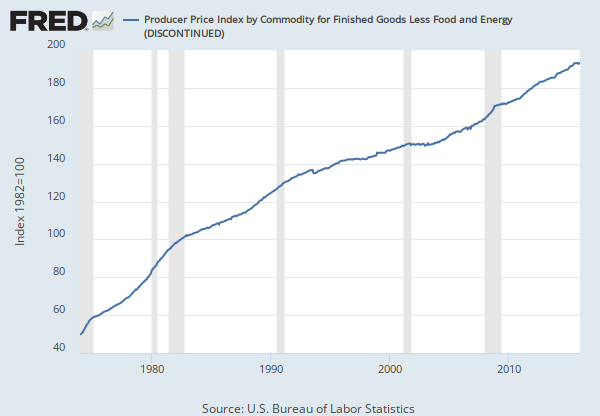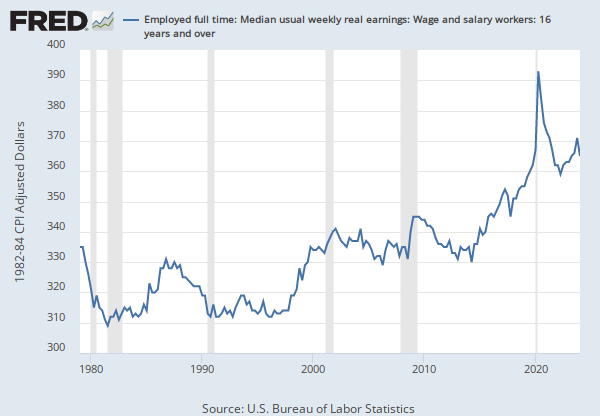Federal Reserve Economic Data: Your trusted data source since 1991
Data in this graph are copyrighted. Please review the copyright information in the series notes before sharing.
NOTES
Source: U.S. Bureau of Labor Statistics
Release: Producer Price Index
Units: Index 1982=100, Seasonally Adjusted
Frequency: Monthly
Notes:
In January 2014, the Producer Price Index (PPI) transitioned from the Stage of Processing (SOP) aggregation system to the Final Demand-Intermediate Demand (FD-ID) aggregation system. Effective with the January 2016 Producer Price Index (PPI) data release in February 2016, PPI ceased the calculation and publication of the Stage of Processing (SOP) versions of these indexes. Going forward, data users wishing to track prices for finished goods, processed goods for intermediate demand (intermediate goods), unprocessed goods for intermediate demand (crude goods), or any of the former SOP-based component indexes will need to use the corresponding index codes from the Final Demand-Intermediate Demand (FD-ID) aggregation system. The FD-ID aggregation system webpage provides a table listing the SOP indexes and their concordant FD-ID indexes. https://www.bls.gov/ppi/fdidconcordance.htm
The data series has transitioned from the Stage of Processing (SOP) aggregation system to the Final Demand-Intermediate Demand (FD-ID). All Stage of Processing (SOP) data series have been discontinued. Please see the replacement for the data series at: https://fred.stlouisfed.org/series/WPSID69112
Suggested Citation:
U.S. Bureau of Labor Statistics, Producer Price Index by Commodity Intermediate Foods and Feeds (DISCONTINUED) [PPIIFF], retrieved from FRED, Federal Reserve Bank of St. Louis; https://fred.stlouisfed.org/series/PPIIFF, .
Source: U.S. Bureau of Labor Statistics
Release: Employment Situation
Units: Dollars per Hour, Seasonally Adjusted
Frequency: Monthly
Notes:
Production and related employees include working supervisors and all nonsupervisory employees (including group leaders and trainees) engaged in fabricating, processing, assembling, inspecting, receiving, storing, handling, packing, warehousing, shipping, trucking, hauling, maintenance, repair, janitorial, guard services, product development, auxiliary production for plant's own use (for example, power plant), recordkeeping, and other services closely associated with the above production operations.
#Nonsupervisory employees include those individuals in private, service-providing industries who are not above the working-supervisor level. This group includes individuals such as office and clerical workers, repairers, salespersons, operators, drivers, physicians, lawyers, accountants, nurses, social workers, research aides, teachers, drafters, photographers, beauticians, musicians, restaurant workers, custodial workers, attendants, line installers and repairers, laborers, janitors, guards, and other employees at similar occupational levels whose services are closely associated with those of the employees listed.
The series comes from the 'Current Employment Statistics (Establishment Survey).'
The source code is: CES0500000008
Suggested Citation:
U.S. Bureau of Labor Statistics, Average Hourly Earnings of Production and Nonsupervisory Employees, Total Private [AHETPI], retrieved from FRED, Federal Reserve Bank of St. Louis; https://fred.stlouisfed.org/series/AHETPI, .
























